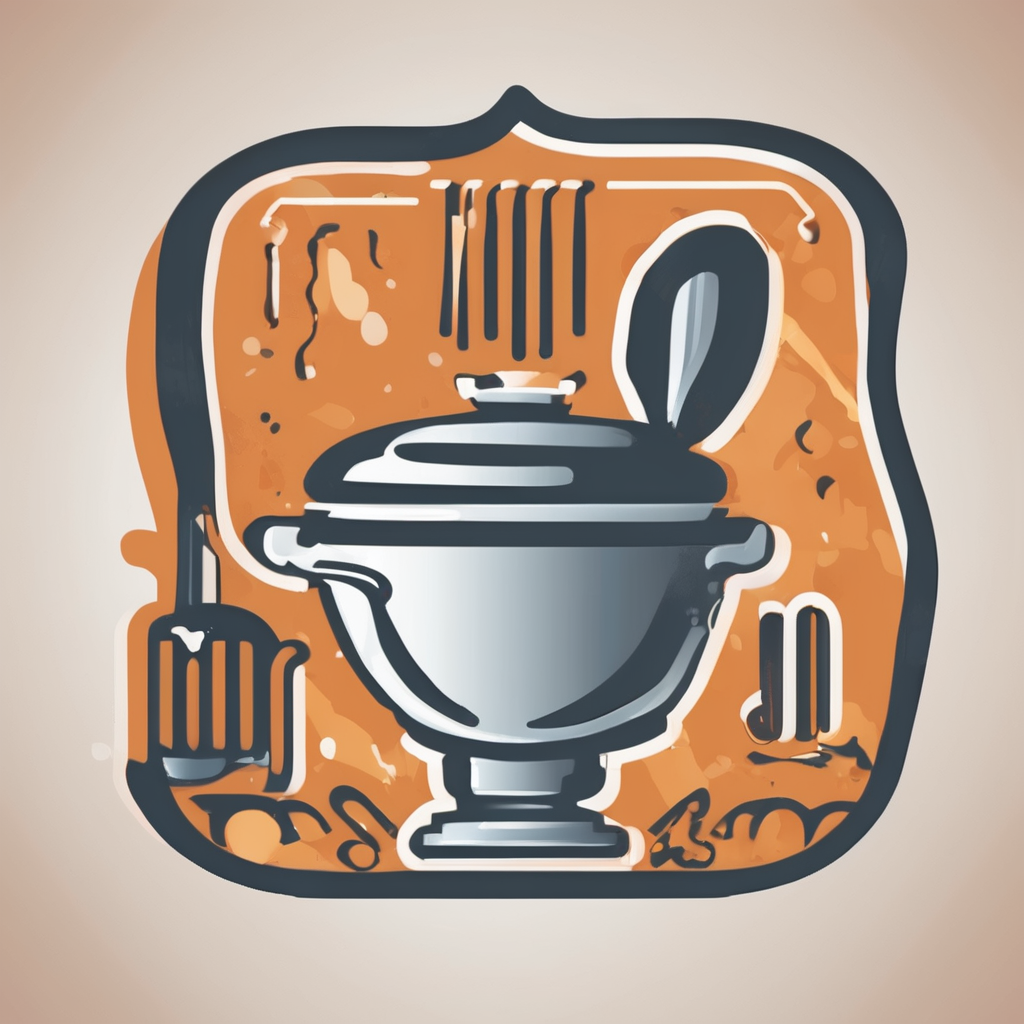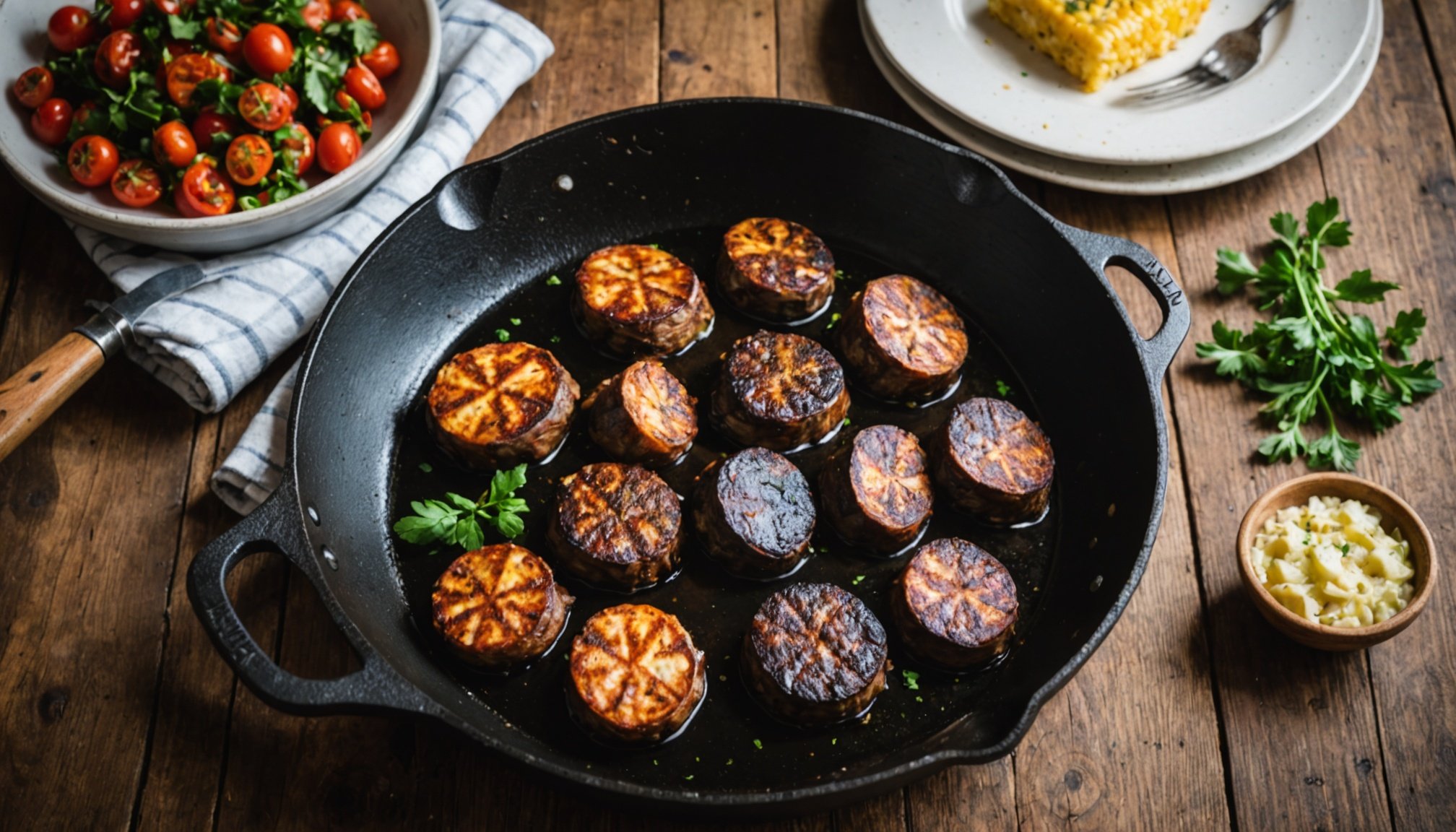The Ultimate Guide to Selecting the Ideal Cast Iron Skillet for Your UK Culinary Needs
When it comes to cookware, few items are as versatile, durable, and beloved as the cast iron skillet. Whether you’re a seasoned chef or a novice cook, a good cast iron skillet can be your best friend in the kitchen. Here’s a comprehensive guide to help you choose the perfect cast iron skillet for your UK culinary adventures.
Understanding the Benefits of Cast Iron Skillets
Before we dive into the selection process, it’s essential to understand why cast iron skillets are so highly regarded.
Also read : Creative pantry organization tips: space-savvy solutions for slim kitchens in the uk
Heat Retention and Distribution
Cast iron skillets are renowned for their exceptional heat retention and distribution. This means that once heated, they can maintain a consistent temperature, which is ideal for cooking a variety of dishes, from seared steaks to perfectly baked cornbread[3].
Durability
Cast iron skillets are incredibly durable and can last for decades with proper care. They can withstand high temperatures and are less likely to warp or crack compared to other materials like stainless steel or carbon steel.
Also read : Discover incredible uk savings: the definitive guide to top-tier commercial kitchen equipment
Versatility
These skillets can be used on various heat sources, including stovetops, ovens, and even campfires. This versatility makes them a staple for both indoor and outdoor cooking.
Health Benefits
Cooking with cast iron can also have health benefits. For instance, cooking in cast iron can increase your iron intake, especially if you cook acidic foods like tomatoes.
Key Factors to Consider When Selecting a Cast Iron Skillet
When choosing the perfect cast iron skillet, several factors come into play.
Size
The size of the skillet is crucial and depends on your cooking needs. Here are some common sizes and their uses:
- Small Skillets (6-8 inches): Ideal for cooking small meals or side dishes.
- Medium Skillets (9-11 inches): The most versatile size, suitable for a wide range of dishes.
- Large Skillets (12 inches and above): Perfect for cooking large meals or for families.
For example, the Barebones Skillet in 12 inches is a popular choice due to its versatility and the inclusion of a lid, which can be used as a Dutch oven[1].
Material and Construction
While cast iron is the primary material, the construction can vary. Look for skillets with a thick bottom, as they provide better heat retention. The Barebones Skillet, for instance, has a thicker bottom compared to other similar products, making it ideal for slow cooking and retaining heat longer[1].
Seasoning
Seasoning is a critical aspect of cast iron cookware. It creates a non-stick surface and prevents rust. Some skillets come pre-seasoned, while others may require you to season them yourself.
### Steps to Season Your Cast Iron Skillet
- **Clean the Skillet:** Use a gentle scrubber and hot water to remove any debris.
- **Apply a Thin Layer of Oil:** Use a high-smoke-point oil like vegetable or peanut oil.
- **Bake the Skillet:** Place the skillet in the oven at 350°F (175°C) for an hour.
- **Let it Cool:** Allow the skillet to cool before wiping off any excess oil.
- **Repeat the Process:** For maximum non-stick performance, repeat the seasoning process 2-3 times.
Handles and Ergonomics
A comfortable handle is essential for safe and easy use. Look for skillets with ergonomic handles that stay cool during cooking. The Barebones Skillet features an ergonomic handle and two loops for easy lifting and hanging[1].
Additional Features
Some cast iron skillets come with additional features like lids, which can be used as a Dutch oven or for slow cooking. The Petromax Frying Pan, for example, comes with a handle and an opposite loop for safe carrying and hanging[3].
Comparing Different Cast Iron Skillets
Here’s a comparative table to help you make an informed decision:
| Brand | Model | Size | Material | Weight | Features | Price Range |
|---|---|---|---|---|---|---|
| Barebones | Skillet 12″ | 12 inches | Cast Iron | 7 kg | Lid included, ergonomic handle, thick bottom | £100-£150 |
| Petromax | Frying Pan | 15-40 cm | Cast Iron | Varies | Handle and loop, pre-seasoned, versatile use | £50-£150 |
| Le Creuset | Signature | 11.75 inches | Cast Iron | 4.5 kg | Colorful enamel exterior, heat-resistant handle | £150-£200 |
| Lodge | Classic | 10.25 inches | Cast Iron | 3.5 kg | Pre-seasoned, loop handle, durable construction | £50-£100 |
Maintenance and Care
To ensure your cast iron skillet lasts for years, proper maintenance is crucial.
Cleaning
Avoid using harsh chemicals or abrasive cleaners. Instead, use a gentle scrubber and hot water. For tougher stains, mix equal parts water and white vinegar in the skillet and bring to a boil.
Storing
Store your skillet in a dry place. Apply a thin layer of oil to the surface and place a paper towel between the skillet and any lid to prevent rust.
Re-seasoning
Re-season your skillet periodically to maintain the non-stick surface. This is especially necessary if you notice the seasoning starting to wear off.
Practical Tips for Using Your Cast Iron Skillet
Here are some practical tips to get the most out of your cast iron skillet:
Preheating
Always preheat your skillet before adding food. This ensures even cooking and prevents food from sticking.
Cooking Oil
Use a high-smoke-point oil for frying and sautéing. This helps in maintaining the seasoning and prevents the oil from burning.
Avoid Acidic Foods
Avoid cooking highly acidic foods like tomatoes or citrus directly in your cast iron skillet as they can strip away the seasoning.
Real-Life Examples and Anecdotes
Many cooks swear by their cast iron skillets for various reasons. Here’s an example:
“I’ve had my cast iron skillet for over 10 years now, and it’s been a game-changer in my kitchen. From cooking hearty stews to baking perfect pancakes, it’s been my go-to pan for almost everything. The key is to maintain it well – a little care goes a long way,” says Sarah, a home cook from London.
Choosing the right cast iron skillet can elevate your cooking experience significantly. By considering factors like size, material, seasoning, and additional features, you can find the perfect skillet that meets your culinary needs. Remember, with proper care and maintenance, your cast iron skillet can become a trusted companion in your kitchen for years to come.
In the words of a seasoned chef, “A good cast iron skillet is like a good friend – it gets better with time and always has your back in the kitchen.” So, go ahead, invest in a quality cast iron skillet, and discover the joy of cooking with one of the most versatile and durable pieces of cookware available.
Common Concerns and Misconceptions
Many kitchen enthusiasts have voiced concerns about cast iron cookware, often fuelled by myths and misunderstandings. One popular myth is that cast iron skillets are difficult to maintain and susceptible to rust. In reality, with proper seasoning and care, these skillets are incredibly durable and can last for generations. It’s crucial to address health concerns that some might have, particularly surrounding the oils used for seasoning. Seasoning typically involves applying a layer of oil and heating it, creating a natural non-stick surface. Some worry about allergens from certain oils, but it’s reassuring to know that many skin-safe and allergy-friendly oils, such as canola or grapeseed oil, are excellent for seasoning.
When it comes to cookware FAQs, a frequent question is: Can cast iron be used on all cooktops? The answer is yes; cast iron is versatile and can be used on gas, electric, and induction cooktops. Another typical question concerns safety in the oven. Cast iron is entirely safe for oven use, even at high temperatures, making it a favourite for baking as well as stovetop cooking. Understanding these aspects can help users appreciate the practicality and longevity of cast iron skillets, freeing them from misconceptions that might limit their culinary potential.











